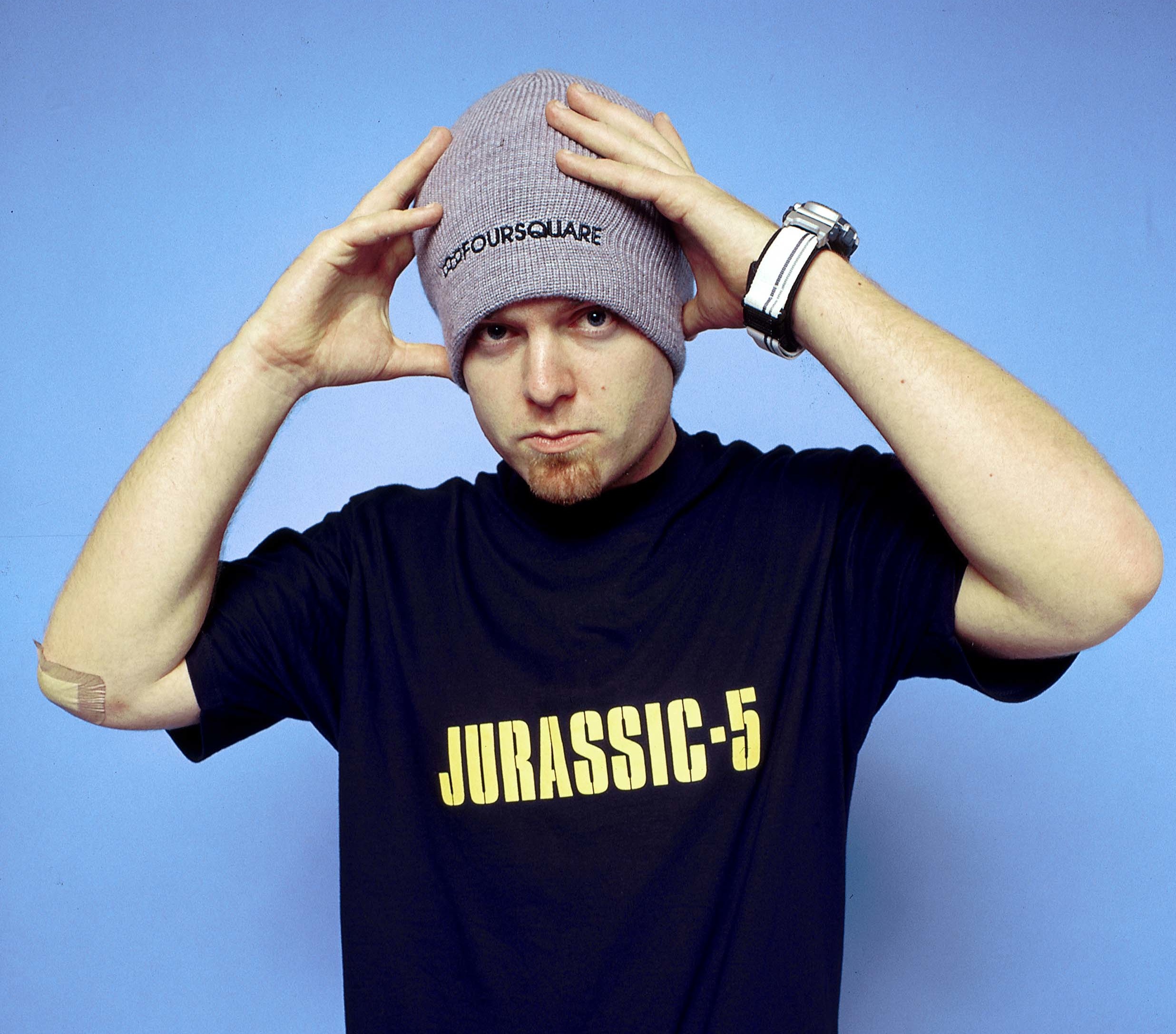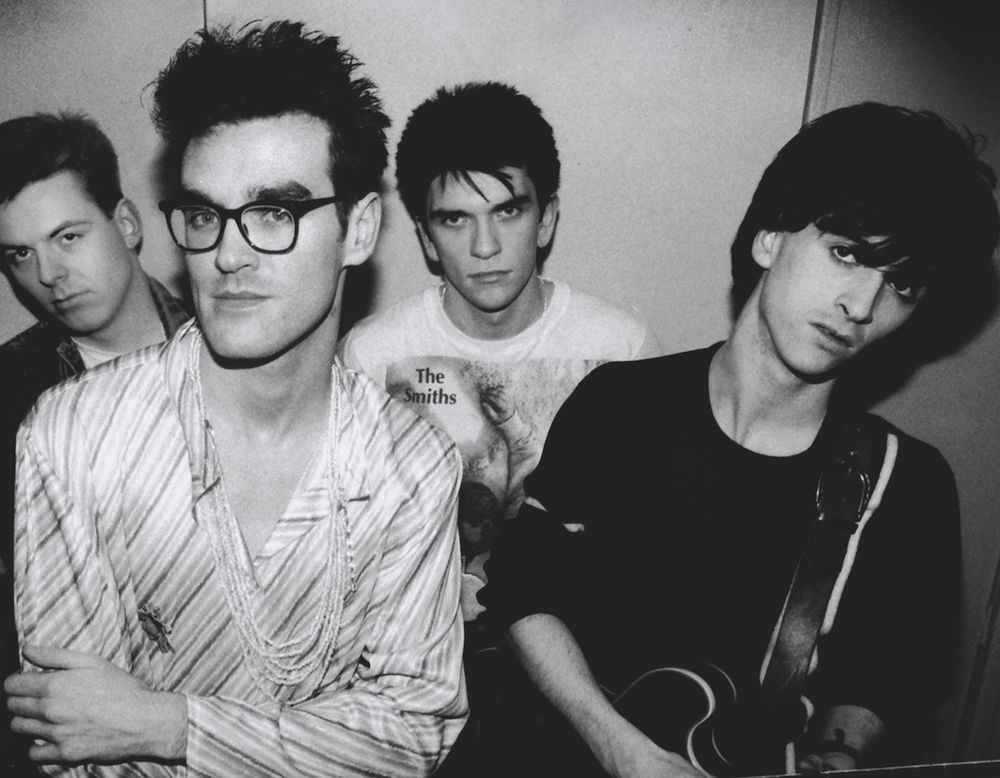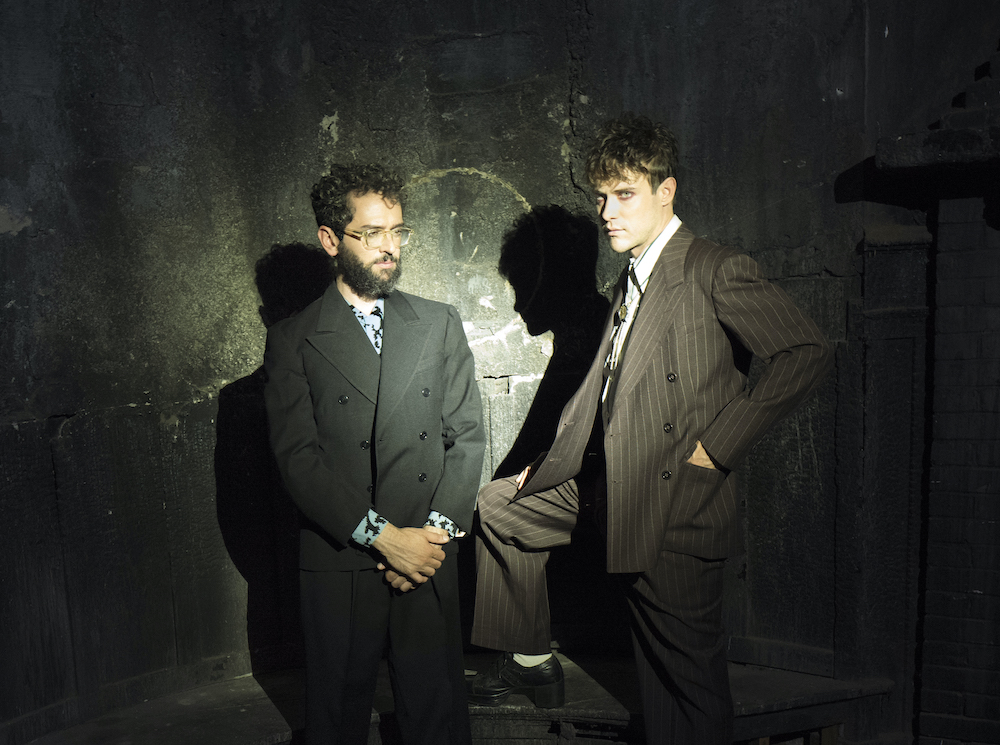This year has to be a hectic one for DJ Shadow. As much as his new album The Mountain Will Fall deserves recognition on its own terms, its Brainfeeder-compatible art-beat minimalism -- honed after an inspiring stint spinning DJ sets at Los Angeles's Low End Theory -- is a new form when too much of his reception still demands a return to form. And that point of no return, Endtroducing..., turns 20 this fall -- a spectacular record in itself, but also the standard Shadow's long since moved past trying to duplicate. Ten years ago, and ten years after his debut dropped, Shadow's touring and interviews behind the release of the divisive The Outsider saw him chafing at the restraints in a now-infamous post on his blog: “Repeat Endtroducing over and over again? That was never, ever in the game plan. Fuck that. So I think it’s time for certain fans to decide if they are fans of the album, or the artist.”
As time's gone on and Shadow's had more time to reflect, he's been able to put his career arc in more sanguine terms -- not as an antagonist dashing expectations, but a restless spirit who's taken in so much music from so many different sources that he can't help searching for new modes to channel it all through. He's laid down enough of a runway for a mass underground movement that the world of hip-hop-derived instrumental beat music -- one with enough post-Endtroducing shine for J Dilla, the Avalanches, Madlib, and Flying Lotus -- benefits as much from his precedent as his presence. So when he can come back after what feels like an increasingly customary five-or-so-year gap between albums with The Mountain Will Fall, and filter his ideas through everyone from Run The Jewels ("Nobody Speak") to Nils Frahm ("Bergschrund"), his career feels more like a still-evolving continuum than a stop-start series of experimental transitions.
As a Bay-rooted phenom who cut his teeth on increasingly far-afield hip-hop in the early '90s -- including name-making collabs with Solesides labelmates like Lyrics Born and Gift Of Gab -- Shadow's transition into trip-hop pioneer, sample-culture icon, and record-digging figurehead left him with a reputation that gave him just enough room to stretch out. And once he segued from the debut statement of Endtroducing to the all-star group effort of UNKLE's Psyence Fiction and the somewhat more idiosyncratic expansion and refinement of The Private Press, even that room started to feel too confining. The everything-at-once eclecticism of The Outsider and the somewhat more subdued but still scattershot 2011 release The Less You Know, The Better threw skeptics, but they didn't exactly sound complacent. And as a curator/creator with an endless drive to put music out there in the world -- whether it's something he builds, something he mixes, or something that, via his label Liquid Amber, he shepherds into being -- Shadow's translation of limitless influence into limitless possibility -- makes the next couple decades worth looking forward to.
Keep in mind that this top-billed solo work is just a sliver of Shadow's greater output, and shouldn't overwhelm the full scope of his work -- the aforementioned UNKLE collab, his production and remix work, and the DJ mixes that give a more literal picture of how he's been able to reconcile all the music he's consumed through the decades. That said, even omitting that extra material on a technicality made narrowing this list down fairly tricky, especially while keeping all his different modes in mind.
10. "Dats My Part" (Feat. E-40) (from The Outsider, 2006)
It's hard to pin down exactly when DJ Shadow became self-aware of the limited "Hendrix of the MPC" reputation that Endtroducing... burdened him with. It could just be coincidence that he dubbed one of his innumerable early-mid '00s megamixes Diminishing Returns, right after the six-years-awaited The Private Press dredged that phrase up from more cynical critical corners. But somewhere between there and The Outsider, Shadow's efforts to rinse off the mildew and murk of mummified-bat-riddled LP catacombs drove him towards new approaches in an effort to fight off the threat of same-old-same-old-itis. Since one of those modes was hyphy, The Outsider alienated casual fans in droves, and even in the cordoned-off form of 2007's Bay Area EP it too often baffled the hell out of the MoWax set that made Shadow a hero.
That might not have done any good shaking his unfair rep as "hip-hop for people who don't like rap," but as startlingly atypical beats go, the only way he could've made the carbonated sub-rattle of "Dat's My Part" any more on-point was to get E-40 on it. So he did, and we're all the better for it; his cratedigger signatures are ditched in the cause of paying honors (and dues) to the distinctly synthesized Oakland sound that was coalescing at around the same early '90s he was making beats for fellow UC Davis alumni Paris. The chirpy yet heavy-knocking beat -- especially with the buzzing, distorted quasi-Hammond on the hook and that classically trained scratching near the end -- fits E-40's slippery drawl so perfectly that it's tempting to picture the alternate-universe Shadow that made his career in cranking out these kinds of bangers. We wouldn't have the other nine tracks on this list, but what we could've gotten instead might've torn up clubs all up the West Coast.
[videoembed size="full_width" alignment="center"][/videoembed]
9. "Enemy Lines" (from The Less You Know, The Better, 2011)
For the most part, the handful of songs on The Less You Know, The Better that didn't veer towards the divergent (and divisive) poles of indie-pop and hard rock felt like uncanny, animatronic duplicates of classic Shadow that moved a little too stiffly to feel alive. There were exceptions, even if the producer who once aimed to do for hip-hop production what electric Miles did for bop wound up resorting to just straight-up sampling Miles himself (cf "Run For Your Life" and its lift of "What I Say"). But "Enemy Lines" is the secret weapon of The Less You Know, a slow burn that pulls a similar trick of deep-sinking hesher meditation as the prog-sourced "What Does Your Soul Look Like (Part 4)" from 15 years previous. It seems deceptively simple to take the bongwatery flanged guitar churn from a 1974 Nazareth ballad and shape a new, escalatingly anxious drum pattern around it. But sometimes that's all it takes to reward listeners patient enough to focus past the loop. "Enemy Lines" shows off Shadow's strong curatorial ear for halfway forgotten but still specifically resonant sources, a veteran sense of when to let the drums breathe even as they knock, and his willingness to let the build result in a graceful crest instead of a ton-of-bricks drop.
[videoembed size="full_width" alignment="center"][/videoembed]
8. "High Noon" (single, 1997)
One of the first things DJ Shadow put out after Endtroducing... made him famous was a nod to DIY roots, even if they weren't necessarily the DIY roots people expected from an MPC-wielding hip-hop producer. A punk song made out of distinctly non-punk components -- the thunderous drums from a sloppy 1965 Curtis Knight/Jimi Hendrix jam session, a fuzz guitar from a hippy-dippery band called Giant Crab, a synthesizer sequence from Tangerine Dream influence Michael Garrison -- "High Noon" plays the sampler like a new way of indie-garage assembly, a more intricate means for self-made rock than the old bedroom four-track. It's still distinctively a Shadow cut, recognizably enough when he benches that hornet-sting guitar riff to let the drums rattle around a subdued organ background hum and make his characteristic percussive buildup/breakdown disassemblage shake down the whole damn structure. The synth and piano loops that rear up in the bridge might be too prog to keep the track as hardcore as those drums might suggest, but it shouldn't be too tough to adapt -- just ask Seattle indie band Juno, who covered this faithfully as a full band on a split EP with the Dismemberment Plan in 2001.
[videoembed size="full_width" alignment="center"][/videoembed]
7. "Lesson 4" (B-side to Lifers Group 12" "Real Deal," 1991)
The mainstream press might not have played up Shadow's biggest hip-hop influences by the time Endtroducing... started getting filed under "Electronic" in typical record stores. But along with the iconoclastic Prince Paul and scratch-preservationist DJ Premier, the most fitting precedent to Shadow's work might have been that of cut-and-paste pioneers Double Dee & Steinski. Their early-mid '80s "Lesson" tracks deconstructed and rebuilt hip-hop's break-driven momentum right at the time DJ culture started to nurture early sample culture. Shadow's "Lesson 4" aimed to pick up from there and pay homage amidst that same sample culture's peak, and if it runs a couple minutes longer than any of the three original Lessons, it's also more frenzied and more exhaustive, straining from all the revolutions that had taken place in the six years since "Lesson 3 (History Of Hip Hop Mix)."
Starting with the Bomb Squad-popularized synth-squiggle of the J.B.'s "Blow Your Head" and running the gamut of beat-geek favorites -- the Mohawks' "The Champ", the Winstons' "Amen, Brother," the Incredible Bongo Band's "Apache" -- "Lesson 4" is as close to a definitive roster of Ultimate Breaks And Beats highlights as you could fit into the neighborhood of eight minutes and still keep things moving at a seamless clip. Deeper digs with Cut Chemist would follow, with the bizarro-obscuro 7" thrills of Brainfreeze/Product Placement/The Hard Sell trilogy bolstering both DJs' adventurous bonafides. But "Lesson 4" is so expertly assembled and sequenced that the canonical familiarity of all those breaks, even 25 years later, isn't enough to dull its immaculate devotion to funk.
[videoembed size="full_width" alignment="center"][/videoembed]
6. "Right Thing/GDMFSOB" (from The Private Press, 2002)
The deadpan British narration ("This tape collection gets bigger every minute…"), the leisurely tinny drum machine that fights for elbow room when increasingly intricate b-boy breaks crowd all over it, the 303/808 interplay that looks back at the hip-hop and acid house '80s through a time-distorting wormhole -- it's Shadow vs. big beat, if you want to be glib about it. But in the context of his previous record, which was golden age boom-bap at its most intensely ruminative, the almost goofy playfulness of this Private Press deep cut is the irreverent ADD b-boy anthem that shows off Shadow's dance-friendly side better than anything else he's done. Good musical timing translates 1:1 into great comedic timing here, starting with the way that blankly recited "But then. I find. Just the right thing," accelerates into titular rhythmic monomania. There are a couple bars halfway through where the crisp, locked-tight drums are interrupted by a super-lo-fi, bootleg-quality live recording that matches the beat while still sounding like an unexpected digression, another moment later where a cloudburst drum roll blasts through out of nowhere to knock you off your shell-toes, and a few judicious drops of the Mr. Spock "pure energy" soundbite immortalized by Information Society back in '88. When a Ginger Baker-of-the-sampler maniac has a whole universe of drum sounds to set loose on an unsuspecting listener, why settle for rimshots?
[videoembed size="full_width" alignment="center"][/videoembed]
5. "Dark Days (Main Theme)" (single, 2000)
"Cinematic" can be a cheap and easy way to describe instrumental music that's emotionally evocative without getting too specific about it. But something about Shadow's work fits that descriptor more strikingly and accurately than most -- especially when it draws disparate styles together and finds their commonalities in service of a deeply focused mood. "Dark Days" was composed for the documentary of the same title, a black-and-white film about a collective of homeless people who lived in abandoned subway tunnels far beneath Giuliani's NYC. Building off a drum-break base from sample-slayers' favorite producer David Axelrod -- sourced, of all things, from an instrumental album by Man From UNCLE actor David McCallum -- and laced with the lonesome guitar twang from an impossibly obscure psych-via-rockabilly single, Shadow builds a neo-noir classic that mixes the glossiest sheen '60s Capitol Records could put to tape and the long-lost sounds of a contemporaneous musician barely one step removed from anonymity. But creating one hell of a complement wasn't enough: those frostbitten Horace Silver-esque piano solos, though based on samples, are rebuilt and played like the original Shadow performances they actually are.
[videoembed size="full_width" alignment="center"][/videoembed]
4. "In/Flux" (single, 1993)
The first time the term "trip-hop" was ever used in the music press was when Mixmag's Andy Pemberton used it to describe this track. That historical context is an interesting bit of trivia -- one that's likely rankled the notoriously noncomplacent, genre-averse Shadow at some point or another -- but it actually undersells just what an audacious work "In/Flux" is. Cut in his early years with MoWax, when Shadow credited himself as "DJ Shadow And The Groove Robbers" (that latter party not any actual human collaborators, but a reference to his turntables), "In/Flux" is so obviously a work of a striving young artist pushing his influences, tools, and environment as far as he's capable of with his limited experience.
And yet that's what makes it exciting: he hasn't yet gotten any idea in his head of what he's not good at. It'd take a super-ambitious young weirdo to get the notion that a 12-minute-plus dubbed-out meditation on soul jazz and spoken-word pieces was actually a workable idea. It'd take a sharp talent with endlessly deep crates to actually pull it off. A mutating suite of recurring loops (including David T. Walker's lush version of the Jackson 5 standard "Never Can Say Goodbye") that never stops feeling restlessly alive even at its lengthy midtempo pace, it's something of a throwback megamix that evoked the Bay Area's Black Power past without lamenting it as a thing long gone. If the problems addressed by the sampled speakers aren't a bygone concern, according to this song -- Bama The Village Poet warning against "social narcotics," the apocalyptic machine guns near the beginning that evoke Funkadelic's "Maggot Brain" while Maya Angelou calls for solidarity, the Watts Prophets' quote that "the record ends and we must begin again" turning the outro into a statement of purpose -- then the music of that same era shouldn't be, either. And with its sample-collage buildups and piercing scratch work, Shadow joined a long line of hip-hop creators that excelled in making the '70s sound like the '90s (and vice-versa), both socially and musically. "In/Flux" is bigger than trip-hop, but if genres die the moment they're named, it'd be hard to find a better eulogy for the genre than this.
[videoembed size="full_width" alignment="center"][/videoembed]
3. "Building Steam With A Grain Of Salt" (from Endtroducing..., 1996)
There's this funny little thing that never fails to stand out as a weird anomaly at the beginning of "Building Steam With A Grain Of Salt." The first song proper off Endtroducing... and, for many, their first real introduction to what Josh Davis envisioned as a musician, pops in almost in medias res with a single isolated word, pronounced from the middle of an unfinished sentence and so clipped it sounds incomplete: "producing." It's a meta-joke in itself, an echo of the same fluorescent-lit radio industry pride-speak that christens the album's introductory track "Best Foot Forward" ("Bob Wood, national program director of the CHUM Group, worked with us in producing..."), something that Shadow transforms into his own little business card: this, right here, is producing.
There's a more self-aware message in the song, though -- one that's both as didactic and as memorable as the pairing of angelic choir, suspense-drama piano, and concrete-rupturing drum breaks that made this track an instant revelation. A sample from a conversational monologue by jazz drummer/educator George Marsh comes across like an imparted lesson to live by -- someone who learned from listening to records, became self-taught, admits to mistakes, and finds it not only possible but crucial to be a student and a teacher at the same time. Even if Shadow's moved on from Endtroducing... since then -- and few songs capture its mixture of untethered boom-bap heaviness and floaty, mysterious beauty quite as well -- that message is just as much a part of his character as the zodiac reading that (accurately) portrays his Cancer sign as making him prone to "assimilating and distributing all he receives, slowly, until it becomes a part of him." If that doesn't say everything, the breakdown halfway through -- where the already chopped-beyond-recognition drum break is pulled apart and crumpled back together with ridiculous dexterity -- finishes the sentence and tacks a boldface exclamation point on it.
[videoembed size="full_width" alignment="center"][/videoembed]
2. "Six Days" (from The Private Press, 2002)
As much a cover version/remix as it is a sample-built composition -- the vocals are lifted verbatim from "Six Day War," a 1971 track by Liverpool one-album wonder Colonel Bagshot -- "Six Days" is one of Shadow's strongest and hardest-fought efforts at making something that has all the unpredictability and organic sensation of a live-played track. Not that much of his best work hasn't come in the process and service of showing all the seams and where he cut them, but this is something more challenging and, in its own way, rewarding. "Usually my favourite things are things that I think couldn't possibly work," Shadow admitted to the Quietus in 2012, regarding the difficulty of syncopating the pitched-down Scottish-guard drums until the loops felt natural. But the stubbornness of getting it right, a perfectionism that worked on his own terms (hiatus be damned), made this his first truly transcendent pop song, where how it makes you feel completely supercedes how it was made.
Some of the old associations surrounding its release might have faded -- a song about the threat of war, dropped in the post-"Axis Of Evil" summer of '02, felt a lot different then than it does nowadays -- but nothing else about the song really has, its detached-from-time version of psychedelia having pushed Shadow free from the overcast of trip-hop's receding trendiness. Instead, those musical elements, and the now-iconic Wong-kar Wai video that accompanied it, feel like they'd be just at home in 2046 (or 2046), assembled from sounds older than recorded music (those recurring orchestral strings, the aforementioned Scots drums) and ones that never quite found a place in their own familiar times (that glimmering organ riff, lifted from psych-folkie Dennis Olivieri's "I Cry In The Morning," sounds more like it came from the ether than from 1970). And since they coalesce so strongly into something that feels not just unique but pulled from wholly unfamiliar ground -- whether it's time, obscurity, or an idiosyncrasy out of step with its own old context to credit for that -- its component parts can't be pulled apart, no matter what angle you try to fit that crowbar in. The lyrics state that "tomorrow never comes until it's too late" -- the music asks, who's to say when tomorrow even is?
[videoembed size="full_width" alignment="center"][/videoembed]
1. "Midnight In A Perfect World" (from Endtroducing..., 1996)
It'd be absurd to try and pick a signature track for someone whose whole 25-years-and-counting career has been e pluribus pluribus from sample source to channeled knowledge to final output. But "Midnight In A Perfect World," the lead single from Endtroducing..., is as good a candidate as any. It's a familiar cut that keeps rewarding immersive listening, and it balances so many different feelings at once -- an elegiac tone that's simultaneously mournful and grateful, a tension that's both fearful and powerful, a mixture of borderline avant-garde tonality and zero-bullshit headnod funk -- that the very pull of them all is a feat in itself.
And if sampling is its own peculiar distillation of what happens when pieces of songs get stuck in our heads, then each element finds new life through its transformation into a new piece of an actual song: the David Axelrod piano, mournful and reflective in "The Human Abstract," pitched up just enough to carry some sense of awe; the chopped-up vocals ("nnnnnownn-nn-n-n-n-nnow"; "midnightmidnightmidnightmidnight"); the swirling electric piano loop that Shadow first built the track around, a song from an album by Finnish prog-jazz bassist/keyboard player Pekka Pohjola whose title translates as "The Madness Subsides" -- and, above all else, the steady stomping lope of the drum break throwing off the march of ticking seconds just before the looming end crests into the first minute of a new day.
[videoembed size="full_width" alignment="center"][/videoembed]






